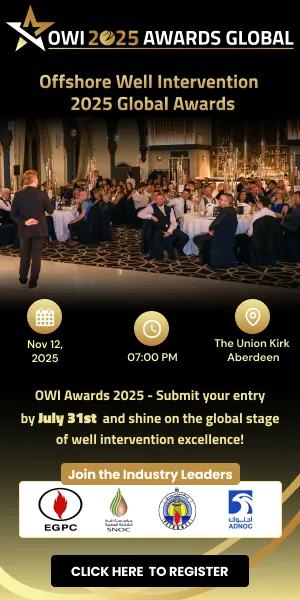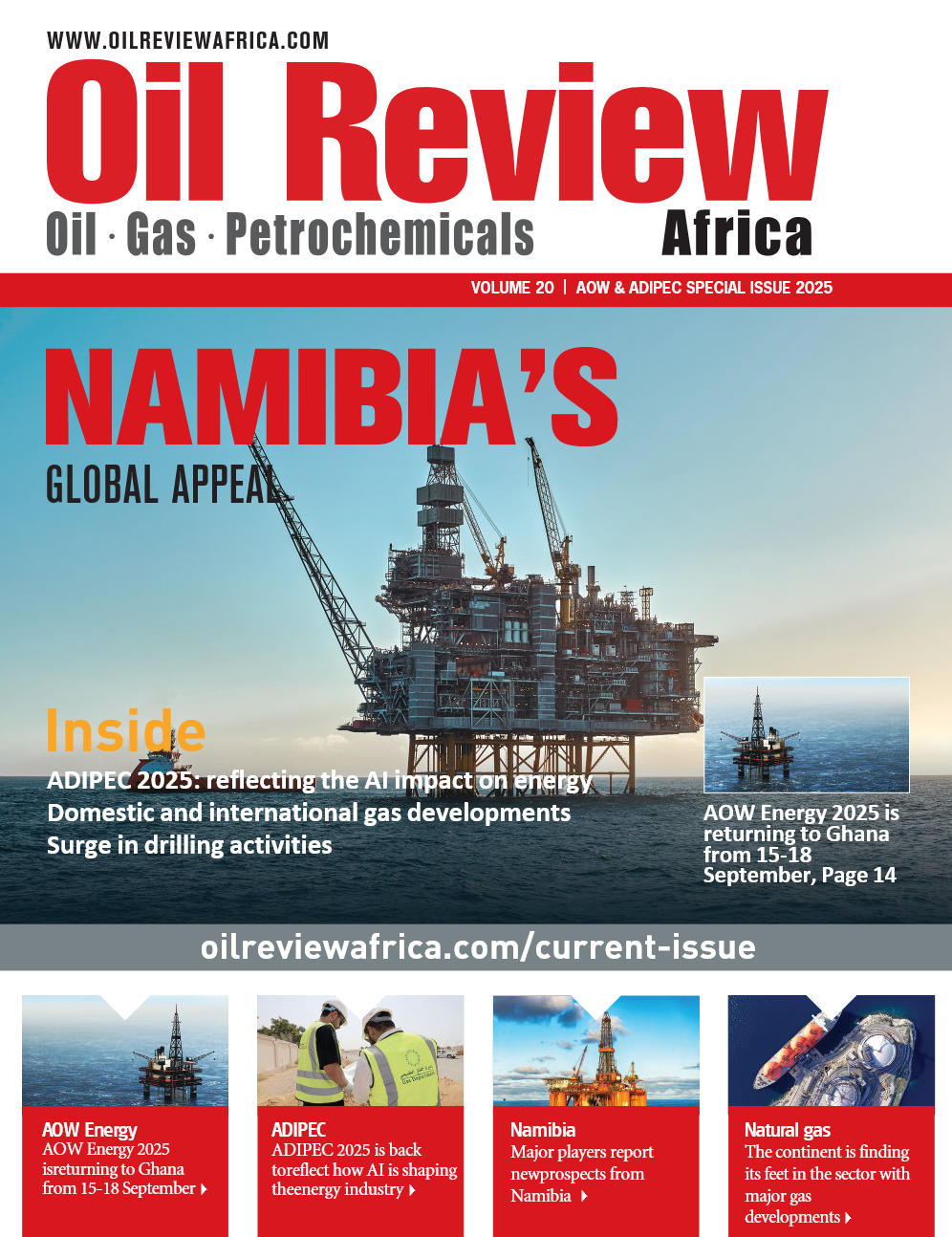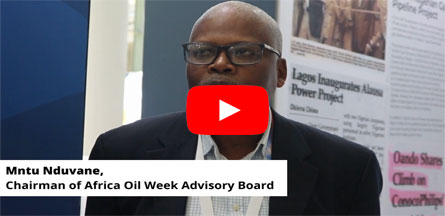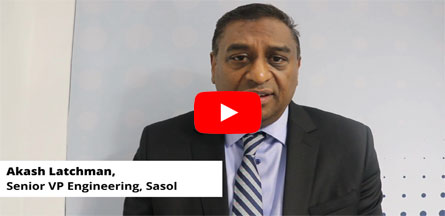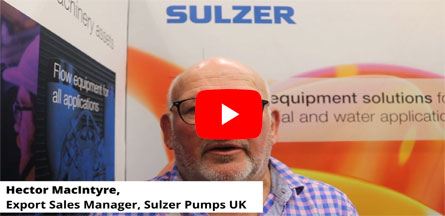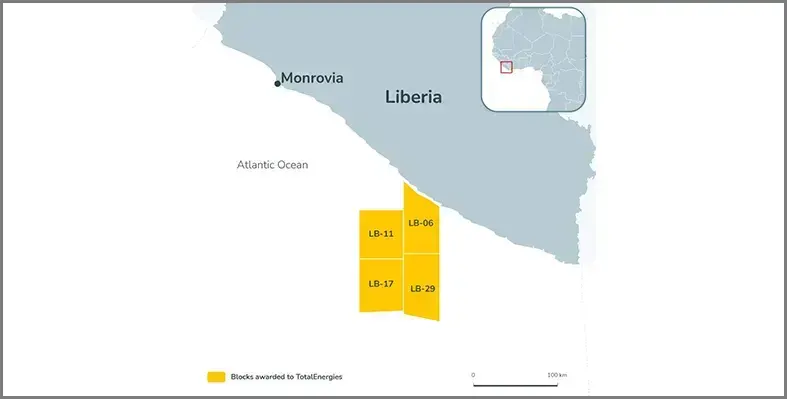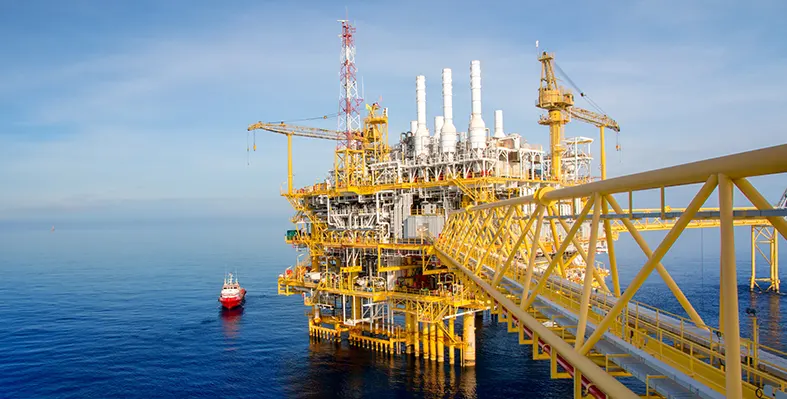In The Spotlight

High-quality seismic data is important to unlock Libya's vast resource potential. (Image source: Stryde)
Libya's Arabian Gulf Oil Company has collaborated with TAY Oil Services and Polaris to initiate a survey onshore Concession 57 with the deployment of Stryde's onshore nodal seismic solutions
High-quality seismic data is important to unlock Libya's vast resource potential, as the country reopens to investors for exploration and development prospects. This can be achieved with Stryde's semi-automated, containerised system, featuring 40,000 seismic nodes, which promise shortest possible turn-over. A single operator can rotate 13,000 nodes within 24 hours by using the containerised system. These nodes can reach exceptional depths, eliminating surface interference for best possible coupling to achieve optimal data quality. The survey operations can be conducted flawlessly without disrupting production activities or the surrounding environment. The streamlining makes large-scale, high-density seismic surveys more efficient and cost-effective.
Abdellatif Hakkoumi, Polaris regional manager, said, “To meet the rising demand for high-resolution seismic imaging across expansive areas of Libya, we required an innovative nodal system capable of supporting a high channel count, without the logistical and financial constraints of conventional systems.
"With the quick delivery of Stryde’s fully autonomous nodes and semi-automated containerised seismic system, we have rapidly transitioned into a new era of land seismic acquisition.
"This advanced technology enables us to dramatically increase trace density per square kilometre. As a result, our customers benefit from improved subsurface imaging, reduced geological uncertainty, optimized well placement, and lower drilling risks, ultimately increasing exploration success rates.”
Stryde’s Containerised Seismic System, housed within a 20ft shipping container, seamlessly integrates all essential hardware for semi-automated node charging, harvesting, and on the fly generation of seismic data deliverables.
Mehdi Tascher, sales director at Stryde, said, “This purchase marks a significant milestone in the advancement of seismic exploration in Libya. With our state-of-the-art seismic system, TAY Oil-Polaris is set to carry out the largest nodal seismic acquisition project ever conducted in North Africa and will be able to meet fully Libyan onshore seismic growing demand.
“We are proud to supply TAY Oil-Polaris with the industry’s only fully integrated and semi-automated seismic system, enabling unprecedented operational efficiency while delivering high-resolution seismic data to their Libyan customers.”
“Libya’s complex geology, defined by thick carbonate sequences and rugged terrain, poses significant challenges for accurate subsurface imaging. To overcome these obstacles, high-density sensor deployment is essential for delivering superior structural and stratigraphic resolution. By harnessing STRYDE’s advanced nodal system, TAY Oil-Polaris is uniquely equipped to navigate these complexities.”
Establishing further presence beyond the North El-Dabaa block in the Arab Republic of Egypt, QatarEnergy will be acquiring a 27% interest in the North Cleopatra block as well
As the energy major from the Middle East signed an agreement with Shell, shares on the block currently stands at 36% participating interest for Shell as operator, followed by Chevron (27%) and Tharwa Petroleum Company (10%).
Commenting on the agreement, Saad Sherida Al-Kaabi, the Minister of State for Energy Affairs, the president and CEO of QatarEnergy, said, “We are pleased to secure this additional exploration acreage, which further expands our upstream exploration activities in the Arab Republic of Egypt.”
“We would like to take this opportunity to thank the Egyptian Ministry of Petroleum and Mineral Resources, and our partners in the block for their valued support and cooperation. We look forward to working together and delivering our exploration objectives,” he added.
The North Cleopatra block is located offshore Egypt in the frontier Herodotus basin and is north and adjacent to the North El-Dabaa block, where QatarEnergy holds a 23% participating Interest. The North Cleopatra block covers an area of over 3,400 square kilometers in water depths of up to 2,600 meters.
The Volans-1X exploration well on Block 2914A that falls under the Petroleum Exploration License 85 (PEL85) offshore Orange Basin has revealed rich-gas condensate bearing reservoirs for Rhino Resources Namibia
The gas resources confirm commercial value of 26m of net pay for partners driving the PEL85 -- Rhino Resources (42.5%), Azule Energy (42.5%), NAMCOR (10%), and Korres Investments (5%).
Following the drilling campaign with Northern Ocean’s semi-submersible Deepsea Mira that helped penetrate the Upper Cretaceous target, the reservoir showed excellent quality petrophysical properties and no observed water contact at a total depth of 4,497.5m TVDSS.
Hot shot laboratory analysis on two samples (at the top and base of the reservoir interval) showed a high condensate to gas ratio (CGR) of >140 and a liquid density of around 40° API gravity. Hydrocarbon samples and sidewall cores were collected through intensive wireline logging operations. Laboratory studies will continue to be conducted on the rest of the fluid samples, side wall cores and cuttings collected during the campaign.
As Volans-1X laboratory testing activities continue, the CEO of Rhino, Travis Smithard said, “Rhino, on behalf of the PEL85 JV, are delighted to announce the discovery of a high liquid-yield gas condensate in excellent quality reservoir at the Volans-1X well. This is our third consecutive hydrocarbon discovery on the Block and further enhances our understanding of the sub-surface. This well result opens up an exciting new play fairway within the licence, identifying different reservoir and fluid type in this well from the recent discoveries made at Sagittarius-1X and Capricornus-1X. Rhino, in collaboration with our partners Azule Energy, NAMCOR and Korres will now evaluate the results of the ongoing testing and integrate them into blockwide prospectivity studies.”
The Minister of Hydrocarbons and Mining Development for Equatorial Guinea has granted a 12-month extension to Europa Oil & Gas (Holdings) plc on the initial two-year period of the EG-08 production sharing contract
This is in accordance with the exploration periods and their extensions set out in Article 2 of the PSC, as well as with the PSC amendments recognised in Articles 29.1 and 9 of the Hydrocarbons Law. Europa has a 42.9% equity interest in Antler Global Limited, which holds an 80% working interest in the EG-08 PSC, with the remaining 20% held by GEPetrol (Guinea Equatorial de Petroleos), the national oil and gas company of Equatorial Guinea, representing the State’s interest. The formalities to finalise the extension are ongoing and are expected to be completed in the coming days.
William Holland, chief executive officer of Europa, said, “I am pleased to have secured the Ministers' approval for this extension which will provide plenty of time to finalise the farm out process for EG-08, where we continue to make good progress. Concurrently, the technical team are working on detailed engineering plans for drilling the Barracuda prospect, which we hope to spud in 2026.”

A single well location can now be pinpointed at Oryx prospect. (Image source: Pancontinental Energy)
Pancontinental Energy has released revised estimates of prospective resources for the company's PEL 87 project, Orange Basin offshore Namibia
Pancontinental chief executive officer, Iain Smith, said, "The Pancontinental technical team continues to deliver, such that we are now able to pinpoint a single well location at the Oryx prospect that offers oil potential at three discrete intervals for a combined 2.5 billion barrels of High Case prospective resource, with a Geological Chance of Success upgraded to 26.2%."
The Oryx prospect now incorporates the prospective features previously identified as the Calypso and Addax Channel leads, due to the fact that it has been determined that all three targets may be effectively tested by a single exploration well. As a result the High Case (3U) prospective resource estimate (gross, 100%) for Oryx now stands at over 2.5bn barrels of oil, recoverable.
Of note is that, in general terms, it is the Best Case (2U) prospective resource estimates which have most benefited from the revised inputs, in particular for Oryx and Hyrax (due to their relative maturity, as prospects). The Low Case (1U) and High Case (3U) for each prospect/lead is affected to a lesser degree and the prospective resource estimates for the Addax Fan and Addax South leads remain unchanged, as does the GCoS. The GCoS for the remainder of the prospect/lead inventory has increased, based upon seismic synthetic modelling which provides positive indications for a hydrocarbon fluid effect (interpreted as a low gas-oil-ratio oil). As such the estimated GCoS for the main Oryx prospect now stands at 26.2% (previous estimate 22.5%).
QI screening is currently on, generating a mapping of an additional prospective feature, external to the Saturn Complex. The Phoebe West lead is interpreted as an Albian-to-Aptian basinal turbidite fan feature fed by a long-lived northern channel clastic bypass depositional system. Interpretation of this feature is ongoing at this time and Pancontinental anticipates providing further detail soon.
A North African geophysical contractor has targeted large-scale 3D surveys in complex terrain with 75,000 of Sercel's DSU1-508 digital sensors
This was topped by 24 more Nomad 90 Neo broadband vibrators for an additional land seismic crew.
The contractor enjoyed an optimised survey performance with Sercel's set of value-added support services for Nomad with the Nomad Connect Asset Optimisation service, providing real-time insights into fleet performance and a complete overview of vibrator configurations. The Vibrator Auto-Guidance functionality enhanced operational accuracy and productivity in the field.
Jerome Denigot, CEO of Sercel, said, “We are pleased to continue building on our long-standing collaboration with this major North African customer. From project planning to delivery and field support, our team remains committed to providing the most advanced geophysical technology and services available. This latest milestone confirms Sercel’s position as the preferred technology partner for complex, large-scale seismic acquisition projects and highlights the growing demand for field-proven solutions that meet the evolving challenges of onshore exploration in North Africa and beyond.”

This project underscores GTT’s central role in enabling major floating LNG developments in new markets.
GTT will be delivering the tank design of a new floating liquefied natural gas (FLNG) unit for Samsung Heavy Industries before it is ready for deployment in the African waters
The deal, which was made during the third quarter of 2025, will see GTT designing the cryogenic membrane containment system for the LNG storage tanks, with a total capacity of 238,700 cu/m. The tanks will be fitted with GTT’s Mark III technology.
This project underscores GTT’s central role in enabling major floating LNG developments in new markets and demonstrates how FLNG solutions can rapidly deliver offshore liquefaction capacity without relying on onshore infrastructure.
Philippe Berterottiere, chairman and CEO of GTT, said,“We are proud to contribute our unique expertise to this major FLNG project, which will help harness Africa’s energy potential to support sustainable growth and energy supply. This order confirms the trust of our long-standing partner Samsung Heavy Industries and demonstrates the relevance of GTT’s technologies to support the development of efficient, reliable and safe floating LNG infrastructure.”
As part of production optimisation strategy, the Republic of Congo is advancing investments on infrastructure development
With aims to expand the container terminal at the Port of Pointe Noire, a €230mn in financing has been generated to onboard freight forwarding service Africa Global Logistics (AGL) for the project.
The new 750-meter quay – scheduled for completion by 2027 – will double the terminal’s capacity to 2.3 million containers annually and support the country’s growing oil and LNG exports.
The Pointe Noire project is being executed by AGL’s subsidiary Congo Terminal in collaboration with engineering firm China Road and Bridge Corporation. Backed by both international and Congolese banks, the €400mn platform will include 26 hectares of quayside, a dredged 17-meter-deep basin, and the installation of 16 gantries. It forms a key part of Congo’s strategy to boost hydrocarbon production to 500,000 barrels of oil per day and LNG output to 3 million tons per annum within five years.
In Angola, AGL also launched operations at its Lobito Terminal in March last year. The terminal – Angola’s second-largest port hub – handles over one million tons of bulk cargo and more than 100,000 20-ft equivalent unit containers annually, with 730 employees operating deepwater berths and modern equipment. The project comes at a pivotal time for Angola, which is preparing to bring several major energy developments online between 2025 and 2028. These include the Cabinda Oil Refinery in 2025, the Agogo Integrated West Hub development in late-2025, the Quiluma and Maboqueiro gas fields in 2026 and the Kaminho Deepwater Development in 2028.
Meanwhile, in Ivory Coast, AGL is playing a vital role in Phase 2 of the Baleine offshore development - West Africa’s first net-zero emissions project. In partnership with engineering firm Saipem, AGL began manufacturing critical subsea structures for the Baleine field in April 2024 at its Carena shipyard in Abidjan. The works include anchoring systems and underwater fixtures totaling over 200 tons, to be deployed in ultra-deep waters. AGL has mobilized 100 skilled local workers – including certified welders, painters and crane operators – reinforcing its commitment to local content, capacity building and sustainable energy infrastructure in Ivory Coast’s rapidly growing oil and gas sector.
AGL’s recent activities in Africa align with its broader vision to support the continent’s energy infrastructure. In addition to the Republic of Congo, Angola and Ivory Coast, the company is currently modernising the Walvis Bay terminal in Namibia while playing a key role in major energy logistics across Mauritania, Senegal and Mozambique.

AOW:Energy 2025 will serve as a platform to spotlight Ghana’s strategic assets. (Image source: Adobe Stock)
Ghana is set to host the 31st edition of AOW:Energy, the flagship event for Africa’s oil, gas, and energy sector, from 15th to 18th September 2025 in Accra, under the auspices of the Ministry of Energy and Green Transition and the Petroleum Commission
It is the first time in over three decades that the event will be held outside Cape Town, South Africa. As regulator of Ghana’s upstream petroleum industry, with a strategic vision of positioning Ghana as a competitive upstream petroleum hub, the Commission views the AOW: Investing in African Energy as a notable opportunity to further raise awareness of the country’s hydrocarbon potential on the global stage.
“We have an opportunity to present a dedicated national showcase, where His Excellency President H.E John Dramani Mahama will outline his vision for positioning the country as one of the most attractive upstream destinations with good geological prospects, through a progressive fiscal regime, regulations, investor-friendly incentives, and forward-thinking energy policies,” noted Emeafa Hardcastle, Ag. CEO of the Petroleum Commission. “AOW:Energy 2025 will serve as a platform to spotlight Ghana’s strategic assets, engage with global investors, build critical partnerships and offer regulators across the continent an opportunity to present emerging regulatory reforms that will shape the continent’s energy future.”
Paul Sinclair, CEO of AOW:Energy, expressed enthusiasm for the momentum building around the event, noting a record level of government and private sector participation. “We are excited about the strong support from the Ghana government in welcoming ministers, national oil companies, regulators and global investors to AOW:Energy 2025. Africa is quickly becoming a top destination for energy investment, and 2025 will be a year for the continent’s upstream sector. Ghana, I believe is ready to take the spotlight when AOW:Energy comes to Accra,” he said.
As AOW:Energy evolves, it continues to consolidate its founding mission of bringing together a powerful network of governments, national oil companies, regulators, energy agencies, and private sector players.
The 2025 edition is expected to open new doors to investment, innovation, and collaboration, providing direct access to emerging opportunities across Africa’s energy landscape.













